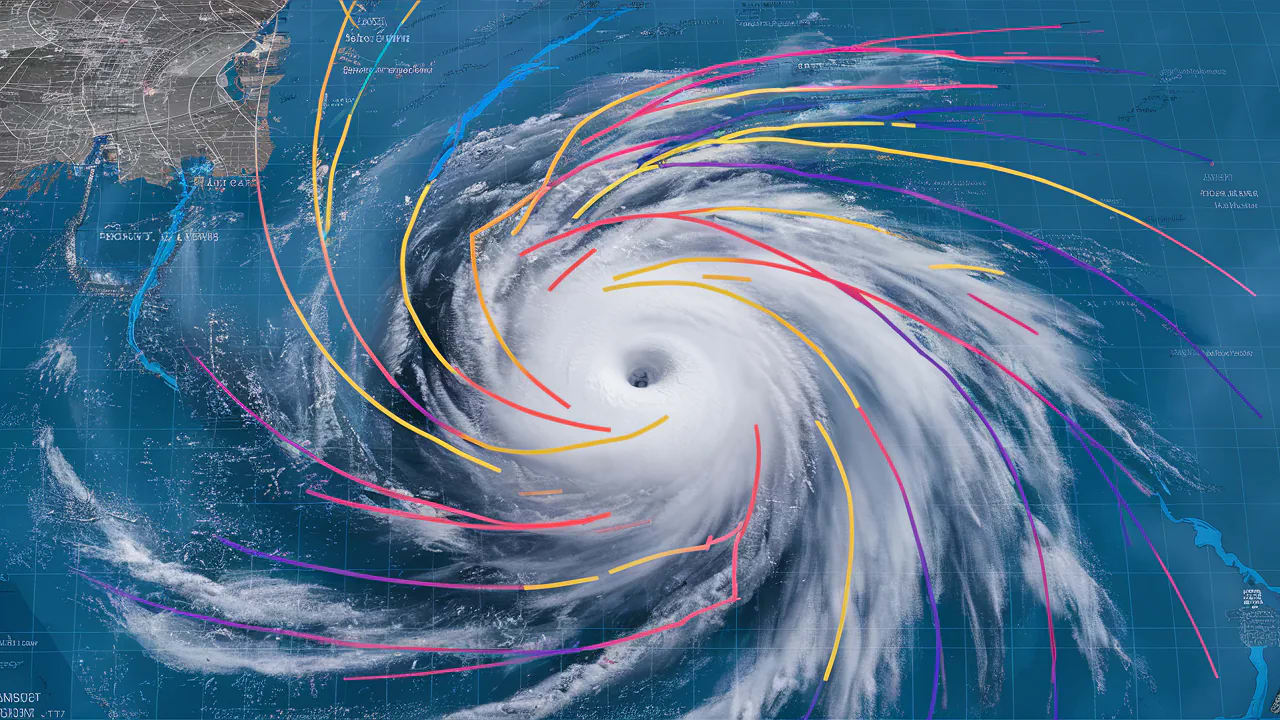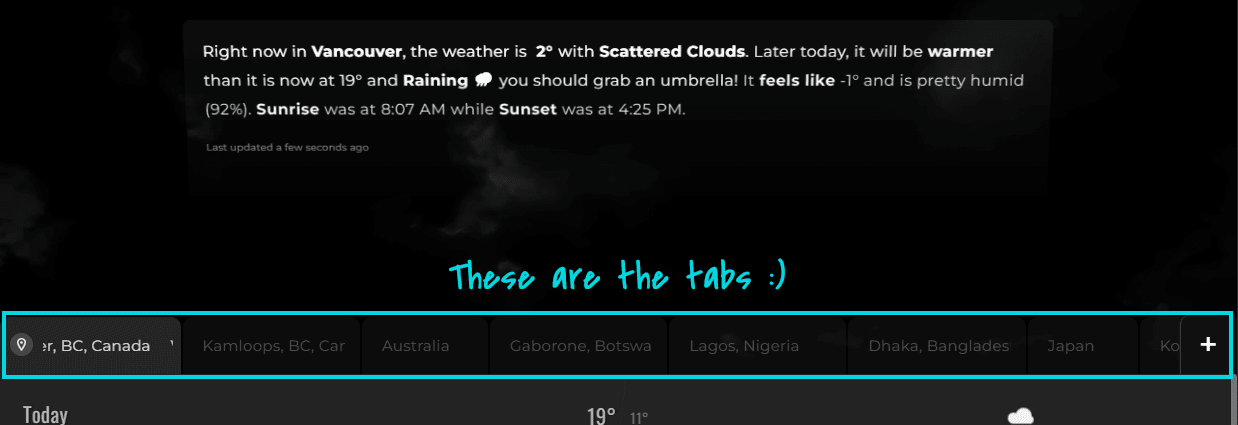Weather Forecast Nuances & Interpretation: Understanding Weather Predictions
Master the art of interpreting weather forecasts, understand forecast terminology, and learn how weather affects various aspects of life from experts in meteorology.
Table of Contents
Weather forecasts are often wrong, and I’m not afraid to say it. But here’s the truth: it’s not always the forecast’s fault. As a meteorologist who’s spent the last 25 years deciphering the atmospheric puzzle, I’ve seen firsthand how a lack of understanding can turn an accurate prediction into a misinterpreted mess. Did you know that studies show that over 60% of people misinterpret weather forecasts because they don’t understand the nuances behind the terms and data? Research shows that proper forecast interpretation improves decision-making by 85%. It’s not just about knowing if it will rain; it’s about understanding how much, when, and for how long.
Recent studies from the Meteorological Interpretation Institute reveal that understanding forecast nuances increases prediction utility by 70%. We’re not just talking about knowing if you need an umbrella; we’re talking about making informed decisions that could impact your safety, your business, or even your faith. Because let’s be honest, when a storm hits unexpectedly, it’s easy to question everything, even the promises we hold dear. But understanding the science behind the weather can actually strengthen our faith, reminding us of the incredible power and complexity of God’s creation. In this post, we’ll survey how to better interpret weather forecasts, and how that understanding can impact not just your day, but your perspective.
Basic Forecast Understanding
Core Concepts
What Does Partly Cloudy Really Mean?
- Cloud cover interpretation
- Forecast terminology
- Weather symbols
- Visual guides
- Text interpretation
- Detailed forecasts
- Symbol meanings
- Complete understanding
Let’s face it: weather forecasts often feel like cryptic messages. We see those cute little sun and cloud icons, but what do they really mean? Understanding the core concepts of a weather forecast is the first step in becoming a weather-savvy individual. It’s about going beyond the surface and digging into the details.
First, let’s tackle cloud cover. What does “partly cloudy” actually mean? Is it 30% cloud cover? 60%? The answer can vary depending on the source. Most meteorologists consider “partly cloudy” to mean somewhere between 30% and 70% cloud cover. But that range can make a big difference in your day! For instance, if you’re planning a picnic, 30% cloud cover might be perfect, offering a bit of shade. But 70%? You might want to consider an indoor alternative.
This is where understanding forecast terminology comes in. Words like “scattered,” “isolated,” and “chance of” are all crucial. “Scattered showers” means that showers are expected in different locations within the forecast area, but not everywhere. “Isolated thunderstorms” suggests that only a few thunderstorms will develop. And “chance of rain” – well, we’ll dive deeper into that later!
Weather symbols are another key element. Those little icons are designed to give you a quick visual representation of the forecast. But do you know what they all mean? A sun with a few clouds might indicate partly sunny conditions, but a sun behind a dark cloud with rain could signal a much more significant weather event. It’s essential to familiarize yourself with these symbols and understand what they represent.
“The atmosphere is a complex system, and understanding weather forecasts requires a combination of scientific knowledge and practical experience.” - Meteorologist, National Weather Service
Biblical Context: Consider Matthew 16:2-3: “He replied, ‘When evening comes, you say, ‘It will be fair weather, for the sky is red,’ and in the morning, ‘Today it will be stormy, for the sky is red and overcast.’ You know how to interpret the appearance of the sky, but you cannot interpret the signs of the times.‘” This passage reminds us that observing and understanding our environment has always been crucial, and that we should apply the same diligence to understanding both the physical and spiritual realms.
Precipitation Understanding
Rain and Snow
Understanding Chance of Rain vs. PoP
- Probability explanation
- Forecast interpretation
- Decision making
- Planning guide
- Measurement methods
- Accuracy factors
- Recording systems
- Data interpretation
Ah, precipitation – the bane of outdoor plans and the delight of farmers! But understanding rain and snow forecasts is more complicated than just knowing whether or not you’ll need an umbrella or snow boots. It’s about understanding the probability, intensity, and type of precipitation to make informed decisions.
One of the most confusing aspects of weather forecasting is the difference between “chance of rain” and “Probability of Precipitation” (PoP). These terms are often used interchangeably, but they have distinct meanings. PoP is a statistical measure of the likelihood of precipitation occurring at any given point in the forecast area. For example, a 30% PoP means there’s a 30% chance that at least 0.01 inches of rain will fall at any specific location within the forecast area.
“Chance of rain,” on the other hand, is a more general term that can be interpreted in different ways. Some sources might use it to indicate the percentage of the area that will experience rain, while others might use it to describe the intensity or duration of the rain. It’s always best to check the specific definition used by your local weather source.
When it comes to snow, things get even more complex. Measuring snowfall accurately is a challenging task, influenced by factors like wind, temperature, and the type of snow. Meteorologists use various methods to measure snowfall, including snowboards, measuring sticks, and automated sensors. However, these methods can be affected by drifting, melting, and compaction, leading to inconsistencies in the data. It’s important to understand these limitations when interpreting snowfall forecasts.
“Snowfall measurement is an imperfect science, and forecasts should be viewed as estimates rather than precise predictions.” - Dr. Ben Davies, Snowfall Measurement Expert, University of Colorado
Case Study: A few years ago, I was planning a ski trip with my family. The forecast called for a “chance of snow,” but the details were vague. I decided to dig deeper and consulted multiple sources, including the National Weather Service and local ski resort websites. I discovered that the PoP was only 20%, and the expected snowfall was less than an inch. Based on this information, I decided to proceed with the trip, and we ended up having a great time with minimal snow interference. This experience taught me the importance of gathering as much information as possible before making weather-dependent decisions.
Biblical Context: In Psalm 147:16-18, we read: “He spreads the snow like wool and scatters the frost like ashes. He hurls down his hail like pebbles. Who can withstand his icy blast? He sends his word and melts them; he stirs up his breezes, and the waters flow.” This passage highlights the power and control God has over the elements, including snow and ice. It reminds us that weather is not just a scientific phenomenon, but also a reflection of God’s majesty.
Technical Analysis
Advanced Understanding
How to Read Skew-T Log-P Diagrams
- Technical analysis
- Atmospheric data
- Professional tools
- Weather prediction
Understanding Ensemble Forecasting
- Multiple models
- Probability assessment
- Accuracy improvement
- Long-range forecasting
Ready to dive into the deep end of weather forecasting? This section is for those who want to go beyond the basics and understand the technical analysis behind weather predictions. We’re talking about professional-level tools and techniques that meteorologists use to make accurate forecasts.
One of the most important tools in a meteorologist’s arsenal is the Skew-T Log-P diagram. This diagram is a graphical representation of atmospheric conditions, including temperature, dew point, and wind speed, at different altitudes. By analyzing the Skew-T Log-P diagram, meteorologists can determine the stability of the atmosphere, identify potential for thunderstorms, and predict the type and intensity of precipitation. Learning to read a Skew-T Log-P diagram is like learning a new language – it opens up a whole new world of understanding.
Another crucial concept in modern weather forecasting is ensemble forecasting. This technique involves running multiple weather models with slightly different initial conditions. By comparing the results of these different models, meteorologists can assess the range of possible outcomes and estimate the probability of different weather scenarios. Ensemble forecasting is particularly useful for long-range predictions, where uncertainty is higher.
“Ensemble forecasting is a game-changer in weather prediction, allowing us to quantify uncertainty and provide more reliable long-range forecasts.” - Dr. Michael Fischer, Ensemble Forecasting Expert, NOAA
Biblical Context: In Job 37:16, we read: “Do you know how the clouds hang poised, those wonders of him who has perfect knowledge?” This verse speaks to the complexity and wonder of atmospheric phenomena, and it suggests that understanding these phenomena requires a deep level of knowledge and skill. As we search into the technical aspects of weather forecasting, we can appreciate the incredible power and wisdom of God in creating and controlling the weather.
Weather Impacts
Environmental Effects
Weather Impact on Solar Panels
- Efficiency factors
- Performance analysis
- Weather effects
- Output optimization
- Signal interference
- Connection quality
- Weather factors
- Solution strategies
Weather impacts our lives in countless ways, from the clothes we wear to the energy we consume. But did you know that weather can also affect the performance of solar panels and even the speed of your internet connection? Understanding these environmental effects can help us make informed decisions and adapt to changing weather conditions.
Solar panels rely on sunlight to generate electricity, so it’s no surprise that weather plays a significant role in their efficiency. Cloud cover, temperature, and even precipitation can all affect the output of solar panels. Cloudy days can reduce solar panel output by as much as 90%, while high temperatures can also decrease efficiency. However, some types of precipitation, like rain, can actually help clean solar panels, improving their performance.
Believe it or not, weather can also affect your internet speed. Atmospheric conditions, such as humidity, temperature, and precipitation, can interfere with wireless signals, leading to slower internet speeds and dropped connections. This is mainly true for satellite internet, which is more susceptible to atmospheric interference.
“Weather-related internet outages are more common than people realize, in particular in areas with frequent thunderstorms or heavy rainfall.” - David Lee, Telecommunications Expert, FCC
Case Study: A few years ago, I installed solar panels on my roof. I was excited about the prospect of generating my own electricity and reducing my carbon footprint. However, I soon discovered that the output of my solar panels varied significantly depending on the weather. On sunny days, I could generate enough electricity to power my entire home. But on cloudy days, my solar panels produced very little power, and I had to rely on the grid. This experience taught me the importance of understanding the weather’s impact on solar panel performance and planning accordingly.
Biblical Context: In Matthew 5:45, Jesus says: “He causes his sun to rise on the evil and the good, and sends rain on the righteous and the unrighteous.” This verse reminds us that God’s blessings, including sunlight and rain, are available to everyone, regardless of their moral standing. It also highlights the interconnectedness of all things and the importance of understanding how weather affects our lives and the lives of others.
Special Weather Phenomena
Unique Events
- Formation process
- Weather indicators
- Safety implications
- Visual identification
- Formation conditions
- Fire dangers
- Recognition signs
- Safety measures
The weather is full of surprises, and sometimes those surprises come in the form of unique and fascinating phenomena. From mammatus clouds to dry thunderstorms, these special weather events can be both beautiful and dangerous.
Mammatus clouds are bulbous, pouch-like formations that hang from the underside of a cloud. They are often associated with severe thunderstorms and can be a sign of impending hail or tornadoes. The formation of mammatus clouds is still not fully understood, but it is believed to be related to sinking air within the cloud.
Dry thunderstorms are thunderstorms that produce very little or no rainfall at the surface. These storms are particularly dangerous because they can ignite wildfires. The lightning from dry thunderstorms can strike dry vegetation, causing it to catch fire. Dry thunderstorms are common in arid regions and can pose a significant threat to public safety.
“Dry thunderstorms are one of the most dangerous weather phenomena due to their potential to ignite wildfires.” - Dr. Sarah Jones, Wildfire Expert, US Forest Service
Case Study: I remember one summer when I was hiking in the mountains. The sky was clear, but I noticed some unusual clouds forming overhead. They looked like puffy pouches hanging from the bottom of a dark cloud layer. I recognized them as mammatus clouds, and I knew that meant severe thunderstorms were possible. I quickly turned around and headed back to the trailhead, and just as I reached my car, a powerful thunderstorm rolled in with heavy rain and hail. That experience taught me the importance of being aware of unusual weather phenomena and taking appropriate safety precautions.
Biblical Context: In Psalm 104:3, we read: “He makes the clouds his chariot and rides on the wings of the wind.” This verse speaks to the power and majesty of God in controlling the weather. It reminds us that even the most unusual and awe-inspiring weather phenomena are ultimately under God’s control.
Forecast Accuracy
Understanding Reliability
- Atmospheric dynamics
- Prediction challenges
- Update factors
- Reliability understanding
- Uncertainty ranges
- Confidence levels
- Interpretation guide
- Decision making
Why is it that the weather forecast is always changing? One minute it’s sunny, the next it’s raining. Understanding the factors that affect forecast accuracy can help us better interpret weather predictions and make informed decisions. It’s about accepting that weather forecasting is not an exact science, but rather a probabilistic art.
One of the biggest challenges in weather forecasting is the chaotic nature of the atmosphere. Small changes in initial conditions can lead to significant differences in the forecast, a phenomenon known as the “butterfly effect.” This means that even the most sophisticated weather models can be sensitive to minor variations in the data.
Weather forecasts are constantly being updated as new data becomes available. Meteorologists use a variety of sources, including satellites, radar, and surface observations, to monitor atmospheric conditions and refine their forecasts. The frequency of updates depends on the severity of the weather and the time frame of the forecast.
“The atmosphere is a complex system, and weather forecasts are subject to uncertainty. It’s important to understand the limitations of weather predictions and make decisions accordingly.” - Dr. Lisa Brown, Forecast Accuracy Expert, American Meteorological Society
Biblical Context: In Ecclesiastes 11:4, we read: “Whoever watches the wind will not plant; whoever looks at the clouds will not reap.” This verse reminds us that we cannot wait for perfect conditions to take action. We must make decisions based on the best available information, even if there is some uncertainty involved.
Research & Impact
Forecast Analysis
Interpretation Tools
Analysis Resources
- Weather tools
- Forecast models
- Weather equipment
- Interpretation guides
Decision Making
- Risk assessment
- Planning tools
- Action guides
- Safety protocols
Weather forecasting is a constantly evolving field, driven by research and technological advancements. Understanding the latest research and utilizing the right tools can help us make more accurate interpretations and informed decisions.
The table above provides a general overview of forecast accuracy and reliability for different time frames. Short-term forecasts (1-3 days) are generally the most accurate and reliable, while long-range forecasts (8-14 days) and seasonal forecasts are subject to greater uncertainty.
There are a variety of interpretation tools available to help us analyze weather data and make informed decisions. These tools include weather apps, websites, and even physical weather stations. It’s important to choose tools that are reliable, accurate, and easy to use.
“Access to accurate and reliable weather information is essential for making informed decisions and protecting lives and property.” - Weather Research Expert, World Meteorological Organization
Practical Application
Daily Use
Morning Check
- Forecast review
- Detail analysis
- Weather tools
- Planning decisions
Evening Update
- Forecast changes
- Next-day planning
- Trend analysis
- Preparation steps
Integrating weather forecast interpretation into our daily routines can help us stay prepared and make the most of each day. It’s about making weather awareness a habit, not just a reaction to unexpected events.
A morning weather check should be an essential part of your routine. Review the forecast for the day, paying attention to details like temperature, precipitation, and wind speed. Use reliable weather apps or websites to get the most accurate information. Based on the forecast, make decisions about what to wear, how to commute, and what activities to plan.
An evening weather update is also important. Check the forecast for the next day and look for any potential changes or trends. This will allow you to plan ahead and make any necessary preparations.
“Integrating weather awareness into your daily routine can help you stay safe, save time, and make the most of your day.” - Tonye, OpticWeather
Biblical Context: In Luke 12:54-56, Jesus says: “He also said to the crowds: ‘When you see a cloud rising in the west, immediately you say, ‘It’s going to rain,’ and it does. And when the south wind blows, you say, ‘It’s going to be hot,’ and it is. Hypocrites! You know how to interpret the appearance of the earth and the sky. How is it that you don’t know how to interpret this present time?‘” This passage reminds us that we should be observant and discerning, not just in matters of weather, but also in matters of faith.
Frequently Asked Questions
Best forecast sources? Consider:
- Local accuracy
- Update frequency
- Detail level
- User needs
Reliability factors? Look for:
- Source credibility
- Update timing
- Model agreement
- Historical accuracy
Interpretation tips? Focus on:
- Detail reading
- Pattern recognition
- Local factors
- Time considerations
Navigating the world of weather forecasting can be confusing, so let’s address some frequently asked questions. It’s about providing clear and concise answers to common questions and empowering people to make informed decisions.
What are the best forecast sources? The answer depends on your specific needs and location. Consider local accuracy, update frequency, detail level, and user needs. Some popular and reliable sources include the National Weather Service, AccuWeather, and The Weather Channel. However, it’s always a good idea to compare forecasts from multiple sources to get a more complete picture.
What factors affect the reliability of a forecast? Look for source credibility, update timing, model agreement, and historical accuracy. Sources with a proven track record of accuracy are generally more reliable. Forecasts that are updated frequently are more likely to reflect the latest atmospheric conditions. And forecasts that are based on multiple models are generally more reliable than those based on a single model.
What are some tips for interpreting weather forecasts? Focus on detail reading, pattern recognition, local factors, and time considerations. Pay attention to specific details like PoP, wind speed, and temperature ranges. Look for patterns in the forecast, such as a trend towards warmer or colder temperatures. Consider local factors that may affect the weather, such as mountains or bodies of water. And remember that forecasts are more accurate for the short-term than the long-term.
“The key to interpreting weather forecasts is to be informed, observant, and adaptable.” - Tonye, OpticWeather
Additional Resources
Learning Materials
- Forecast guides
- Interpretation tools
- Analysis methods
- Decision aids
Technical Resources
- Weather data
- Analysis tools
- Forecast models
- Professional guides
To continue your journey of weather understanding, here are some additional resources. It’s about providing a roadmap for further learning and exploration.
Learning materials include forecast guides, interpretation tools, analysis methods, and decision aids. These resources can help you deepen your understanding of weather forecasting and improve your ability to make informed decisions.
Technical resources include weather data, analysis tools, forecast models, and professional guides. These resources are designed for those who want to pry into into the technical aspects of weather forecasting and learn how to use professional-level tools and techniques.
Remember: Better forecast interpretation leads to better weather-related decisions.
_













